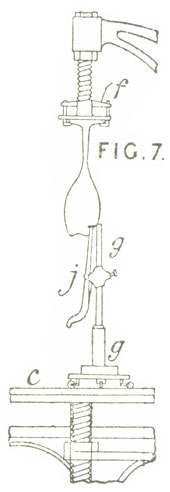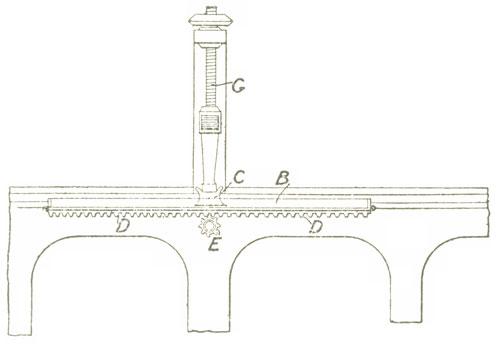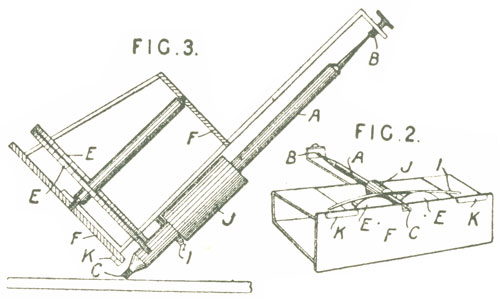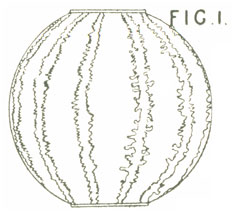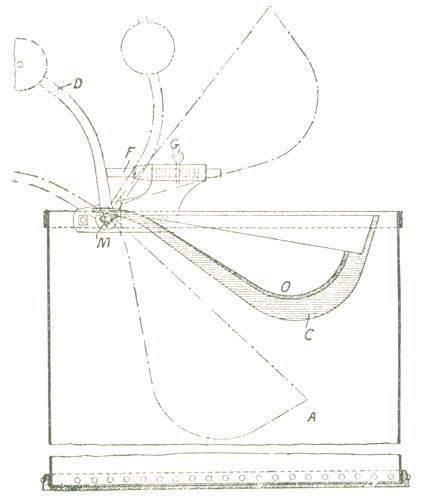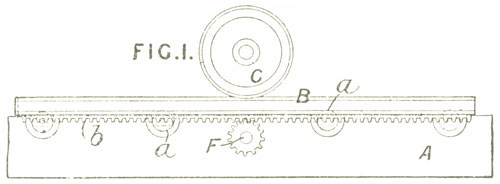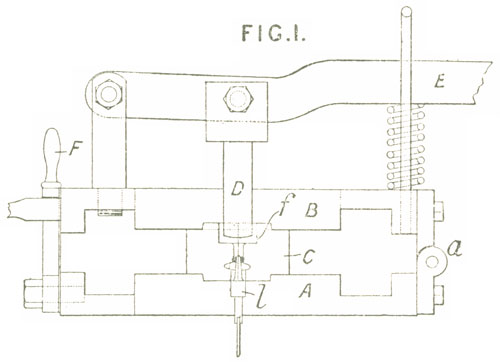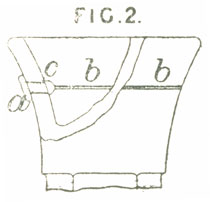3725. Clark, A. M., [Teissonnière, A.]. Dec. 23.
[Provisional protection only.]
Transparent and translucent materials. — Relates to the production of materials for window curtains and blinds, and consists in superposing muslin, gauze, tulle, guipure, and
similar materials on and uniting them to oiled materials, such as
gauze, taffetas, cambric, jaconet, &c., of transparent quality,
which are then printed in colours to resemble stained glass &c.
when viewed as a transparent medium. The superposed fabric may be
plain, figured, or embroidered. The diaphanous materials may be printed
in black or other opaque colours to form lines resembling lead framing,
or they may be printed or dyed in opaque or translucid colours with
landscape or other designs by lithographic, photographic, &c.
processes, or by the modes of transfer used in colour printing. The
invention further relates to a transferring process applied to the
oiled fabrics. The pattern to be transferred is coated with boiled
linseed oil, or printer's mordant, diluted with spirits of turpentine.
The pattern is then applied on the oiled fabric and caused to adhere by
pressure. The back of the proof is then damped and removed, leaving the
impression on the fabric, which is then washed and allowed to dry. The
fabric is then heated and exposed to the air. A thin coating of the
mordant is then applied, and the fabric is heated and dried a second
time. The pattern thus obtained is heightened in effect by the
application of transparent colours, lacs, or tinctorial products
dissolved or ground in spirits of turpentine, alcohols, oils,
varnishes, boiled oil, printer's mordants, or essential oils; after
applying one or more of these varnishes or lacquers, a coating of
turpentine varnish is applied. Lacs ground in essence of turpentine and
varnish may also be used, although aniline colours are preferable. In
preparing the aniline colours and tinctorial products derived
therefrom, the coloured varnish is dissolved more or less and a
quantity of white spirit varnish is added, the resulting product being
transparent, mordant, and waterproof, &c. The lacquers,
colours, &c. may sometimes be mixed with inert matters, such as
chalk, kaolin, and the like. In some cases the "paniconographic" or
helio-graphic processes, or stencilling may be employed, and bronze or
white powders are sometimes applied. Unsized paper may sometimes be
used in place of the oiled fabric. The Specification also states that
embroidered tulle on which muslin is applied is illuminated by
incorporating therewith a suitable gummy solution, more particularly
gelatine and fish glue, and then applying thereon either the coloured
varnishes or tinctorial products before mentioned, so as to form
multicoloured diaphanous surfaces surrounded by the embroidered designs
serving to secure the muslin to the tulle.
|



